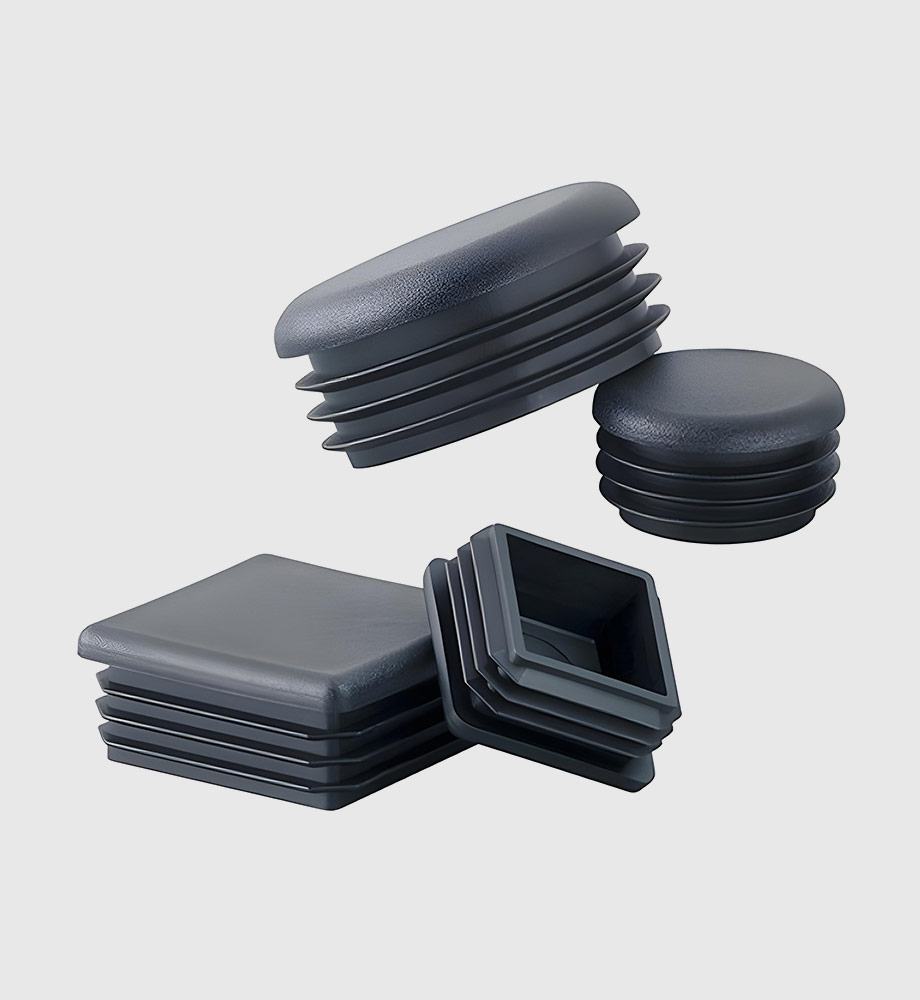Key Features
- Material Options: Typically PVC, polyethylene, polypropylene, or nylon, chosen for flexibility and durability.
- Snap/Press Fit: Designed for tight friction fit; some have barbed ribs or expanded inner sleeves to grip the tube securely.
- Color Variety: Standard colors (black, white, gray) and custom colors for design needs.
- Shapes and Sizes: Round caps for pipes, rectangular caps for profile sections, flanged caps for post bases, etc.
Benefits
- Finish and Safety: Provide a neat aesthetic finish and hide sharp edges on cut tubing.
- Protection: Keep out dust, insects, and moisture from hollow structures.
- Noise Dampening: Soft plastic caps on furniture or equipment feet reduce sliding noise on floors.
- Easy to Replace: They can be removed and re-fitted if needed during maintenance.
Applications
- Structural Tubing: Capping ends of square or round steel/alu pipes in handrails, frames, and furniture.
- Automotive: Protective caps for chassis or suspension tube ends during assembly/storage.
- Molded Pipe Fittings: Caps on threaded pipe ends to protect threads during transport.
- Electrical: Terminal end covers for connectors or wire bundles.
Technical Specifications
- Material Properties: Flexible enough to insert easily, yet resilient to stay in place.
- Temperature: Most common caps –20°C to +60°C; nylon versions higher if needed.
- Standards: Often custom; some conform to tube standards (e.g., ASTM/ISO tube dimensions).
Unique Selling Points (USPs)
- Chemical and Weather Resistance: Plastic caps won’t corrode or degrade outdoors.
- Wear Resistance: Durable polyethylene or nylon stays intact under heavy foot traffic when used as end feet or plugs.
- Versatility: Custom molding allows virtually any shape; can include logos or labeling in mold.

